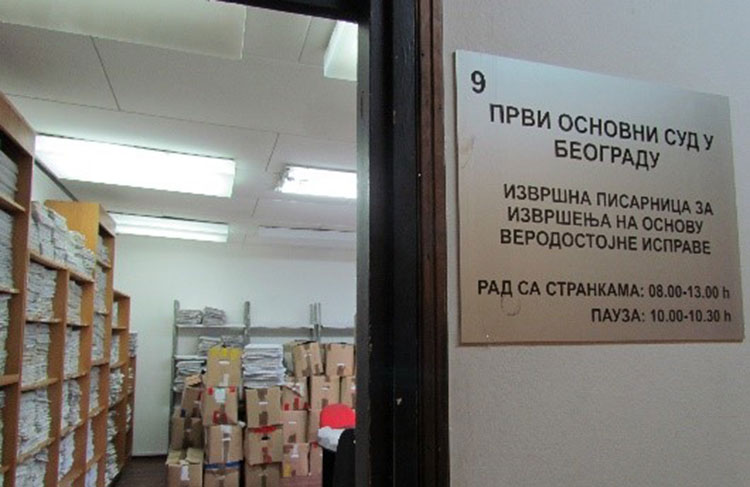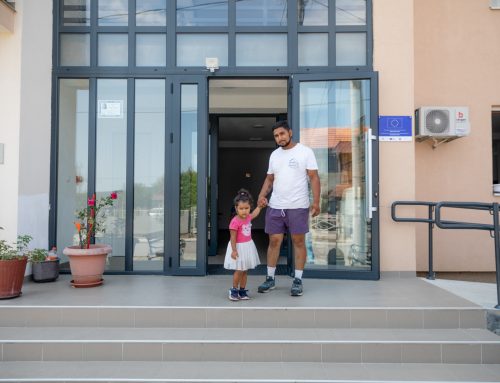Reducing the number and age of pending cases in Serbia’s courts is one of the primary goals of the Judicial Efficiency Project (JEP), which was launched in Serbia in February 2016.
According to the President of the Supreme Court of Cassation Dragomir Milojevic who recently presented the 2016 Annual Report on Serbian courts’ operation, in 2016 alone, Serbian courts managed to settle nearly three million proceedings, leaving some two million at the end of 2016. These results are good, he said, given the conditions in which courts operate.
He said that courts saw a massive influx of proceedings between 2014-2016, leaving the courts to handle 850,000 proceedings more than expected.
“This situation imposed a great burden on the judicial system, slightly increasing the number of settled proceedings and at the same time highly decreased the overall number of unsettled court proceedings since 2012 – by 1,100,000,” the President of the Supreme Court of Cassation said.
The largest backlog at the First Basic Court in Belgrade
 The baseline for this activity was the number of cases older than two years as of the end of 2015, which was approximately 1.5 million, 70% of which were being handled at the First Basic Court in Belgrade.
The baseline for this activity was the number of cases older than two years as of the end of 2015, which was approximately 1.5 million, 70% of which were being handled at the First Basic Court in Belgrade.
The bulk of these were Enforcement Cases, and the new Law on Enforcement and Securities mandated that plaintiffs express a preference before July 2016 for their cases to remain in the courts or to be transferred to private enforcement agents. Failure to respond would result in the administrative closure of the cases.
Although only about 2% of cases were transferred, approximately 40% were flagged for administrative closure. But the process of closure involved a gargantuan level of effort to locate and organize the files and to prepare them for closure in the system and processing by a presiding judge. Conditions were especially challenging in the First Basic Court in Belgrade, where the files were kept in a dilapidated warehouse that did not have enough space.
 JEP experts worked with the Supreme Court, the Ministry of Justice and the High Judicial Council to prepare and deliver instructions and judgement templates to all Basic Court Presidents, and made several site visits to each of 30 partner courts, in order to work on these matters, as well as other backlog cases.
JEP experts worked with the Supreme Court, the Ministry of Justice and the High Judicial Council to prepare and deliver instructions and judgement templates to all Basic Court Presidents, and made several site visits to each of 30 partner courts, in order to work on these matters, as well as other backlog cases.
The courts included in the EU project decreased the number of backlog cases by 50%
 To assist in some of the more overburdened courts, JEP engaged support staff and provided hands-on logistical support to the 1st Basic Court in Belgrade, as well as Basic Courts in Cacak, Novi Pazar, Kraljevo, Nis and Vranje. Working with court and project staff, 50 support staff spent 6 months organizing and processing files for closure, both physically, and in the judiciary’s Case Management system.
To assist in some of the more overburdened courts, JEP engaged support staff and provided hands-on logistical support to the 1st Basic Court in Belgrade, as well as Basic Courts in Cacak, Novi Pazar, Kraljevo, Nis and Vranje. Working with court and project staff, 50 support staff spent 6 months organizing and processing files for closure, both physically, and in the judiciary’s Case Management system.
Courts were required to report their results for 2016 by the end of January 2017, and the results were nothing short of spectacular. JEP partner courts managed to reduce their backlogs by approximately 50%, closing a staggering 700,000 cases, including approximately 90,000 cases in the smaller courts receiving direct assistance and over 500,000 in the Belgrade First Basic Court.
The success of this effort can be attributed to the cooperation of court presidents, judges, staff, and the targeted assistance of project experts and support staff. It has been truly a team effort, and although, there is still much work to do in 2017, the final year of the JEP, the courts have made a sizeable difference in what has been a major impediment to efficiency over the past few years.




